There is no “perfect” bug-out bag or survival kit; inevitably the best laid plans fall apart.
This list, however, weighing less than 25 pounds, however, is a good start.
Overall Bug Out Bag Kit
I’ve ordered these all by weight. I’ve linked as many of these things as I could find so you can see the exact model, reviews, price, etc and don’t have to search google for them. There were a couple that I either couldn’t find an exact match to what I have or I just replaced so I tried to mention those below.
The first box is the overall pack. The bags with ‘*’ will be broken down in boxes below that.
Oh, if you’re on a cell phone, turn it sideways because some phones clip the info off the right side of the lists.Here’s the backpack along with the individual bags, cookset, sleeping bag, and tent:
Here are all the things that are in the backpack that are not shown in the pic above (except my cup and maps. Oh, and I was apparently wearing my sandals so they’re not in the shot either – just a few inches below):
Survival/Tools Bag
Electronics Bag
Clothing Bag
Cook Set
Medical Kit
Hygiene-Toiletries Bag
Why I chose the gear I haveSo. Let’s break this down somewhat so I can explain some of the thinking of why I chose what I chose. To make it make sense, I’ll break them down all by usage.
Cargo-carrying gearCargo is really where I cut down most of my weight without sacrificing effectiveness. I found a great bag that’s big enough to carry everything I need, with even some extra room left over. With my original bag, attachments to hold what wouldn’t fit, and internal bags to keep things organized, my cargo weight was well over 8 pounds! Essentially, cargo is all the stuff that holds your stuff that isn’t stuff you need to survive. I cut that down by half, saving me four pounds that I could devote to other gear and I actually have more room than I did before. I can now fit everything inside the bag – including the tent – and I still have some room. The tent adds 4.82 pounds but still keeps everything under 30 pounds plus food/water.
I’m using an Osprey Atmos 65 backpack in large, which gives me actually 68 Liters of space. I chose this particular bag because I already have an idea about how much space I need from using my Camelbak BFM for so many years. I originally got a 5.11 Rush 72 backpack to replace it, after MANY people suggested it and read some really great reviews on it. After thinking it all through, it wasn’t going to work. In order to carry the amount of items I wanted, I’d have to add cargo space to the bag and it already weighed quite a bit. Plus, it’s a very military-looking bag, which I’d rather avoid if I could. It also seals up at the top and has a built-in cover for the rain.
I also switched out all my internal bags for ultralight ones. For organization, I got a set of Eagle Creek packing cubes and an REI expandable packing cube. If I didn’t already have the REI bag, I would have gotten another set of the Eagle Creek cubes instead and separated things even more – and the whole set weighs about the same as the one REI bag does.
Cutting tools
One of the most important things to have in a survival kit is a fixed-blade knife. I used to carry a SOG Seal Elite, and I even carried it in Iraq and Afghanistan, but for a bug out bag here at home, I wanted to see if I could cut down the weight and still have a very effective knife. After a LOT of research, I pretty much came back to the same thing but got the SOG Seal Pup instead.
My original SOG Seal was 12.3″ in overall length and weighed 10.3 ounces. The pup weighs 5.4 ounces and is 9.5″ overall. When you consider the smaller sheath size, that saved me almost a quarter pound right there – and it’s a great little knife.
Batoning a knife to build a shelter is a LOT of work so I wanted to get a really good hatchet. It came down to the Estwing E24A Portsman’s Hatchet vs the Fiskars X7 14-inch Hatchet. I went back and forth with this one for a long time. I ended up with the Fiskars because it was over a quarter pound lighter (from what I could find on the web and assuming the sheath weight) and had even more 5-star reviews. I REALLY like the looks of the Estwing but cutting weight is a priority over aesthetics. Barely.
As a backup knife, I have the Gerber Multitool that the Army gave me that I keep in one of the front belt pockets of the backpack and a small Boker Subcom F in my Survival-Tools bag.
Because cutting medium-sized logs is a LOT of work with a hatchet and even more work with a knife and stick, I got a basic replacement chain saw, cut it so it was one length instead of a loop, and put a couple of strong key rings on the ends. I can use it for a very effective hand saw by either sticking a short branch in each end to make handles or tying a length of the 750 cord on each end. If you then tie some fishing line and some kind of weight, you could throw it up and over a branch up in a tree and cut it down without having to climb up. I keep the chain rolled up in a small Altoids-type of tin.
Making fire
I think fire is one of the most important elements of survival so I have a lot of redundancy here.
Slid into the back of my backpack is a sheet-sized Fresnel Lens. It weighs so little that it didn’t come up on my scale and since there’s a flat spot that it fits into nicely, it effectively takes up no weight. It’s a no-brainer to get one of these. Here’s a quick video I did showing how easy it is to start a fire with one of these if you have a sunny day and some dry stuff laying around:I have an old Brunton lighter that I threw in there because it’s not only a storm-proof lighter, it has an LED light built-in. No idea which model it is.
I have two Doan Magnesium/Ferrocerium Firestarters. Don’t get the cheap stuff, get the Doan one. The Chinese knockoffs just don’t work as well and they’re about the same price. I keep one in my Survival-Tools Bag and one in the sharpening stone pocket of my SOG Seal Pup knife.
I have a very small plastic container that has a couple of tea light candles, a couple of packs of matches, and some Tinder-Quik Fire Tabs that I’ve sealed inside short lengths of a large straw to keep them dry. I didn’t really need this but I threw it in anyway.
In my Survival-Tools bag, I also have a small two-hole magnesium pencil sharpener. It’s great for shaving tinder from twigs and only weighs a quarter ounce. I’m not sure if the magnesium it’s made out of is pure enough to be used to help build a fire but it might.
I carry a roll of toilet paper and a few small packs that came with some MREs I ate in Afghanistan. This stuff is great for starting fires. Also great if you happen to bring a girl camping. You’re like a rockstar if you bring toilet paper. Chicks dig toilet paper.
Filtering/purifiying water
My go-to water filter system right now is the Sawyer Mini. It filters a LOT more water than pretty much everything out there, but to do that, you need to use the plunger it comes with. It can also be adapted to run inline with a Camelbak and it comes with a roll-up water bottle. I keep one Sawyer Mini in one of the front belt pouches and one in the Survival-Tools bag along with a plunger and a roll-up bottle.
I have my cook set detailed below so I won’t go into it here but it can obviously be used to boil water.
I have a Harley handkerchief that they gave me at the local shop on Veteran’s Day last year. It can be used to filter out all the big stuff and to soak up small puddles. You can also brush it on tall dew-covered grass and plants as you walk through and wring it out into your mouth, although that won’t taste too good. Much better than using your socks though.
Shelter/clothing gear
The first thing you’ll probably notice is that I carry a tent, which brings my overall weight to almost 30 pounds plus water/food. I currently have a discontinued Köppen tent but I’m looking at replacing it because it’s not self-standing. Finding something to dig in with tent stakes in the desert isn’t always all that easy.
Here’s my post on the best ultralight bug out bag/backpacking tents. The Hilleberg Nallo GT2 tent is at the top of that list for me. It’s a pound and a half heavier than one I have right now but MUCH better. If I lose the large vestibule and go with the Nallo 2, I’m at about the same weight as I am now. Just not sure exactly which way I wanna go with it.
Why not just a hammock? By the time you get a hammock and tarp, you’re pushing into the weight territory of some of these tents (and over it in some cases), and there aren’t a lot of trees around here to tie up to anyway. Regardless, I can’t sleep in a hammock. I have delicate features.
I have one of the REAL emergency blankets folded into an inner back pocket of the backpack. It’s orange on one side and silver on the other. It can be used as a tarp above (with a reflective cover that puts heat back to you if you need it or away if you don’t) or as a pad below to keep you insulated from the ground.
Because it’s orange, you can use it to signal. I originally carried a VS-17 signal panel but it was way not big enough to be used for much other than signaling. I do have a couple of the cheap emergency blankets but those are crap. They’re ok for reflecting heat from the ceiling of a tent or behind you with a fire but don’t think you’re actually going to use them as a blanket for any extended time.
I originally had a SOL Breathable Emergency Bivvy but I absolutely cannot sleep in it. It’s WAY too restricting if you’re broad-shouldered. You could try one and see if it works but if it does, you need to hit the gym bro. I almost packed it regardless because it would have been ok to bring along as a pad I could fill in with leaves etc but that put me over my 25 pounds so I dropped it from the list.
I always carry a Mountain Hardwear Lumina 45 sleeping bag wherever I go. To keep it dry and small, I use an XS Sea to Summit compression dry sack. I’ve had this bag and water-resistant compression sack with me through several deployments and camping trips. It’s very lightweight and packs to about the size of a football. Definitely a nice thing to have.
In a survival situation, how prepared you are will dictate whether you make it out in one piece.
This list and associated reasoning give you a critical starting point.
For more information on this awesome survival starting point, please visit Gray Wolf Survival. They have amazing tips and are a reliable source for information!
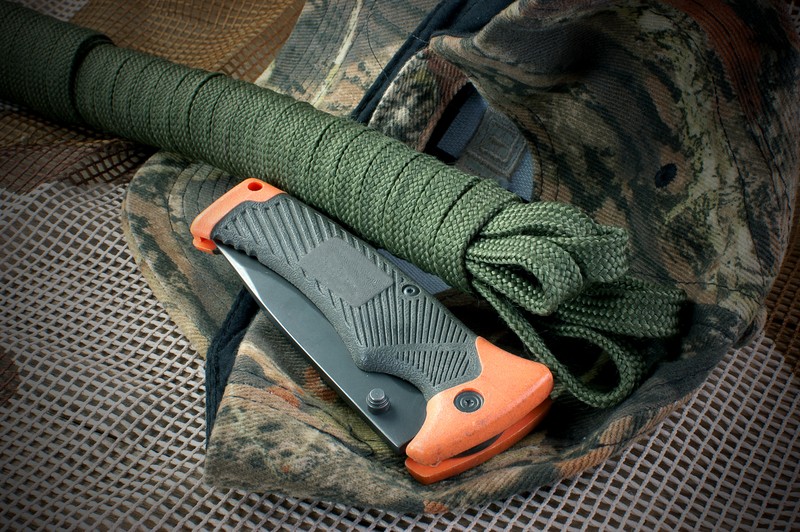
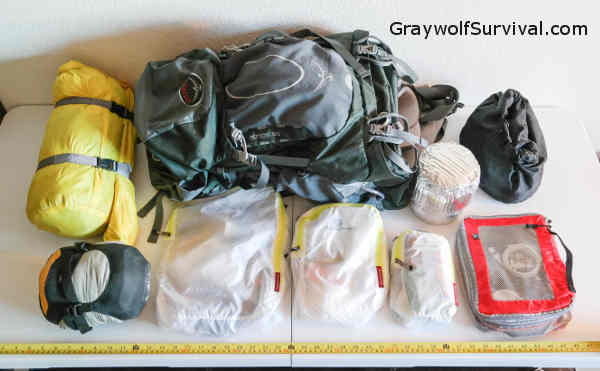
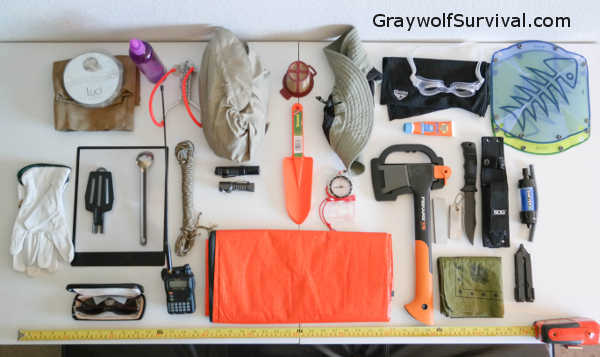

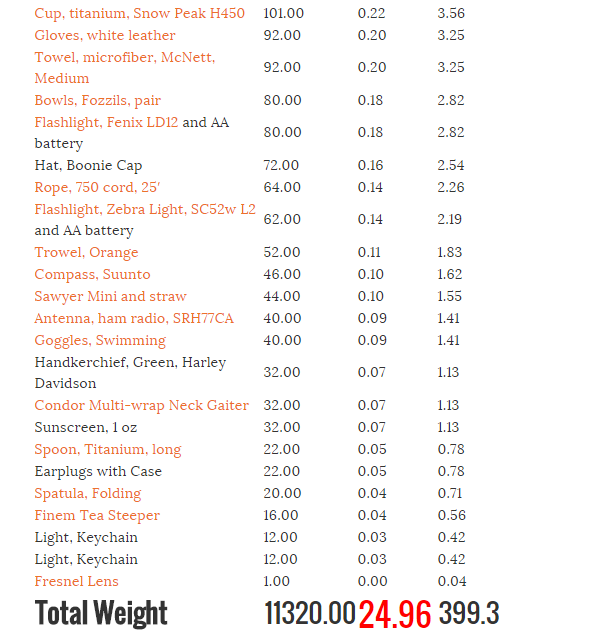
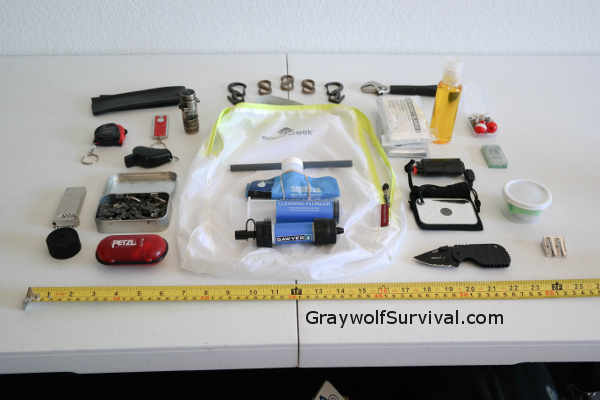
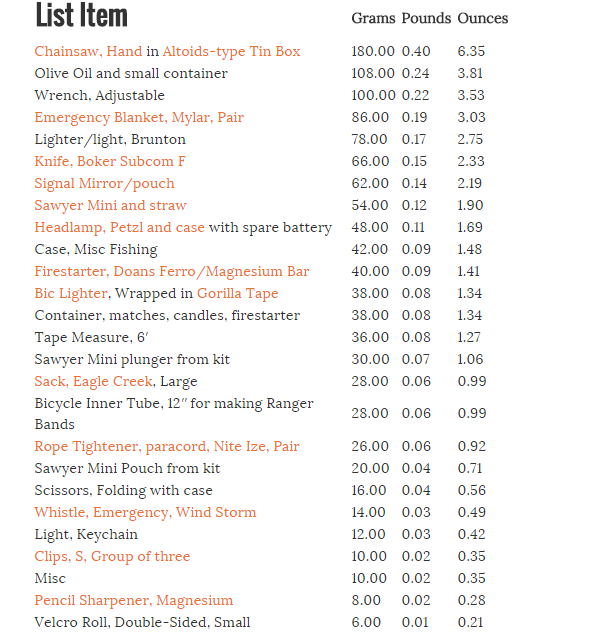
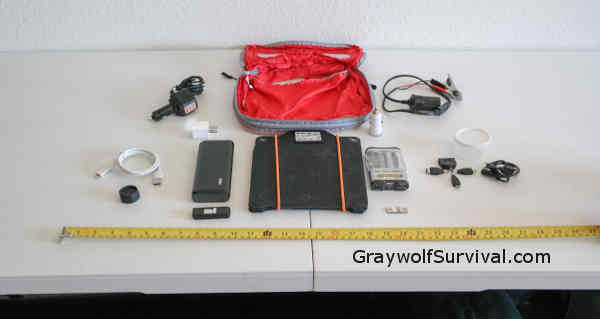
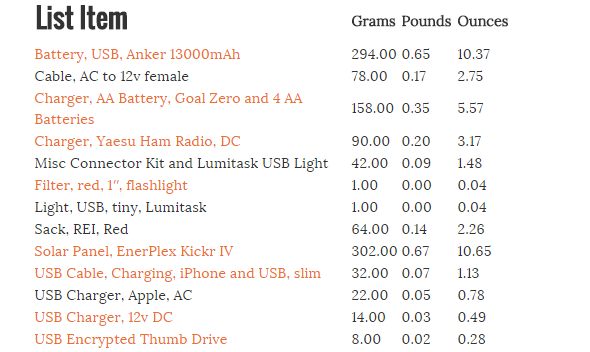
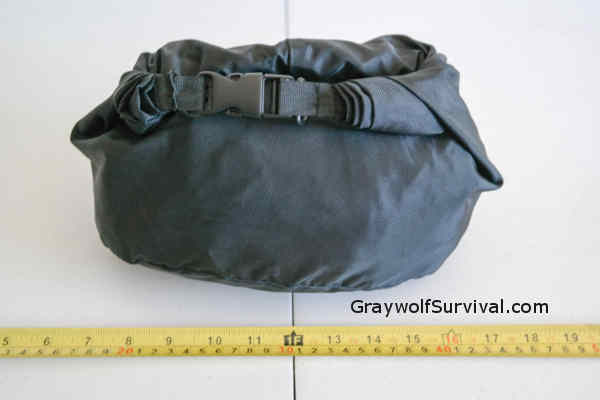
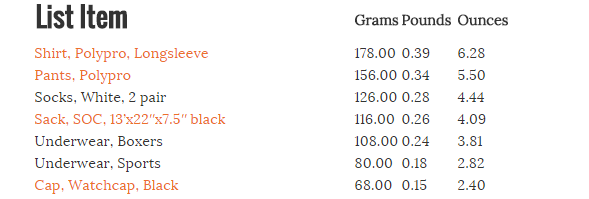
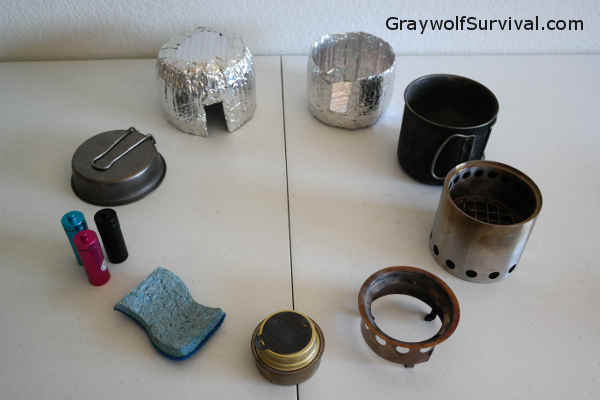
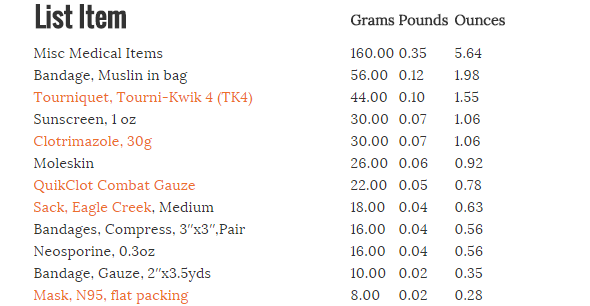
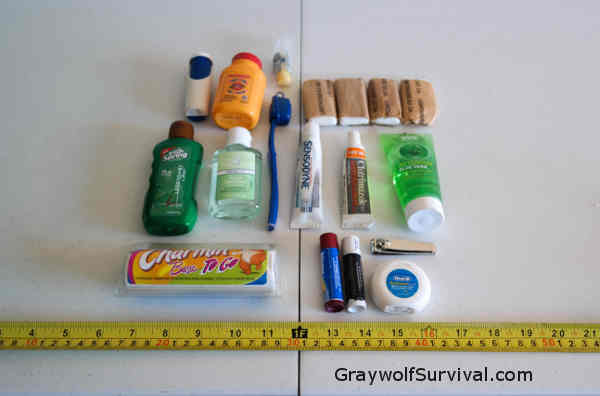
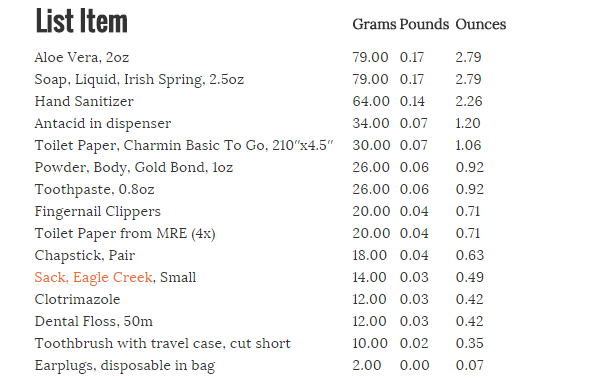
sorry. i would rather add some more weight to have better equpiment than what is in this post
@[100002612255464:2048:David Rai]
And throw that pocket knife away and get a fixed blade don’t nobody want that garbage
ANY knife in an emergency is a GOOD KNIFE. All you knife and gun snobs spend all you like for a knife because You know more than anyone. If you have to have a certain kind of knife or you can’t function I suggest you take a course in using what is at hand at the time of need. and while you are at it see about some grammar and English lessons too.
Love that knife have it in my bag and use the $#%&!@*isted open version as my EDC. Absolutely a great knife
Nice knife
I really agree with the weight factor.
…
No $#%&!@* !!!
Lol
@[82405225:2048:Kelley Austin]
Too much emphasis on electronics.
@[100000223461682:2048:Toby L Rogers]
@[1517366469:2048:Justin Gillies]
I dunno I have an M16 switchblade and it’s pretty solid. I’ve used it for skinning and survival, thing is at least 40 years old, my dad bought it when he was in the service in the 70s
@[1782297015:2048:Taylor Rae]
@[100007239820765:2048:Frankie Seiber]
@[100001113512825:2048:Vic Staab] @[100009106597381:2048:Rebell Randall Yell]
Lookin for a good all around fixed blade bush knife this is it.
Ratt ll or the ESSEE
I have to have weight on my knife. 25lbs you can pack a lot. I have tents that weight less than 2lbs and a sleeping bag that weighs less than 2lbs. That ultra light stuff cost money but extremely effective and can pack more $#%&!@*. A good weight for me is 35lbs….put a 25 lbs weight in your backpack and walk 13 miles. I guarantee you’ll feel it.
@[100001139018614:2048:Jeremy McElwee] @[100001088377522:2048:Sandra Caldwell]
You can have the nicest folder in the world but it will still have moving parts that will break eventually
and everyone knows a fixed blade knife has ever worn out or broke.
I have been looking into those do they Stand up to the challenge
I have an extensive knife collection. I use a boker magnum for most of my outdoors. I haven’t used this yet. I paid 160.00 for it and as far as quality I would price it as 300.00
My opinion Top knives are the best American made knife you can own.
Mine is part done
@[699852408:2048:Kim Hartfield]
Fixed and folders both have a use in life
But not bear grylls bull$#%&!@*
Nathan Nathan Feuquay
Thanks
Lowin Cate Chris Bunch
Carrie Ann Tucker Annette Edenfield Daniel Foster
The rope is for hanging Muslim. You’re going to need a lot more.
Lists for lightweight backpackers or survival bags seem to always have the same dorky orange trowel for digging a poop hole, why? You can always find a stick, rock, or even the heel of your boot to dig an adequate cat hole.
The first tip, don’t put anything with the name Bear Grylls in your pack.
If you are going to put a “folding knife” in your bag, spen a little extra, and put in a knife that is worth having. A Buck or a Case knife will hold up to hard use. While the Case “Double-X” is somewhat more pricey, it is a good investment for a dependable tool.